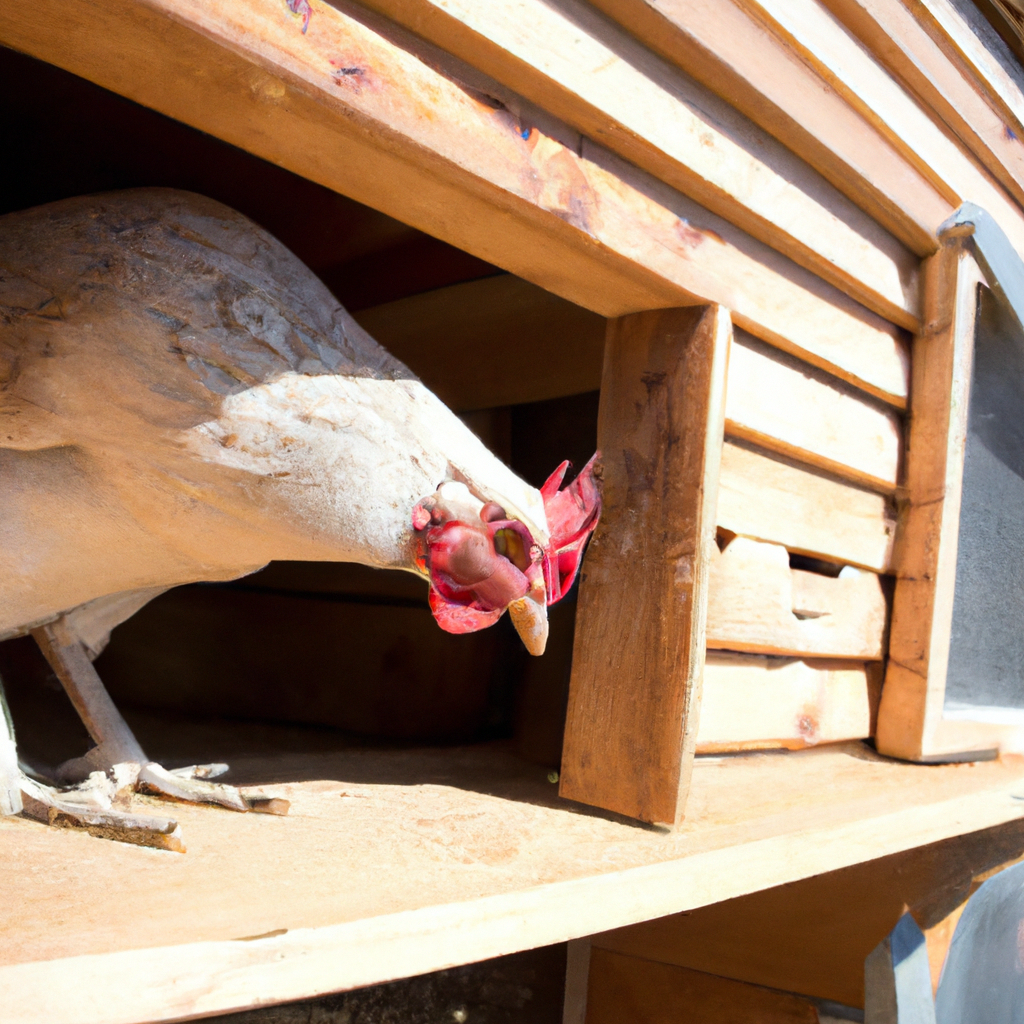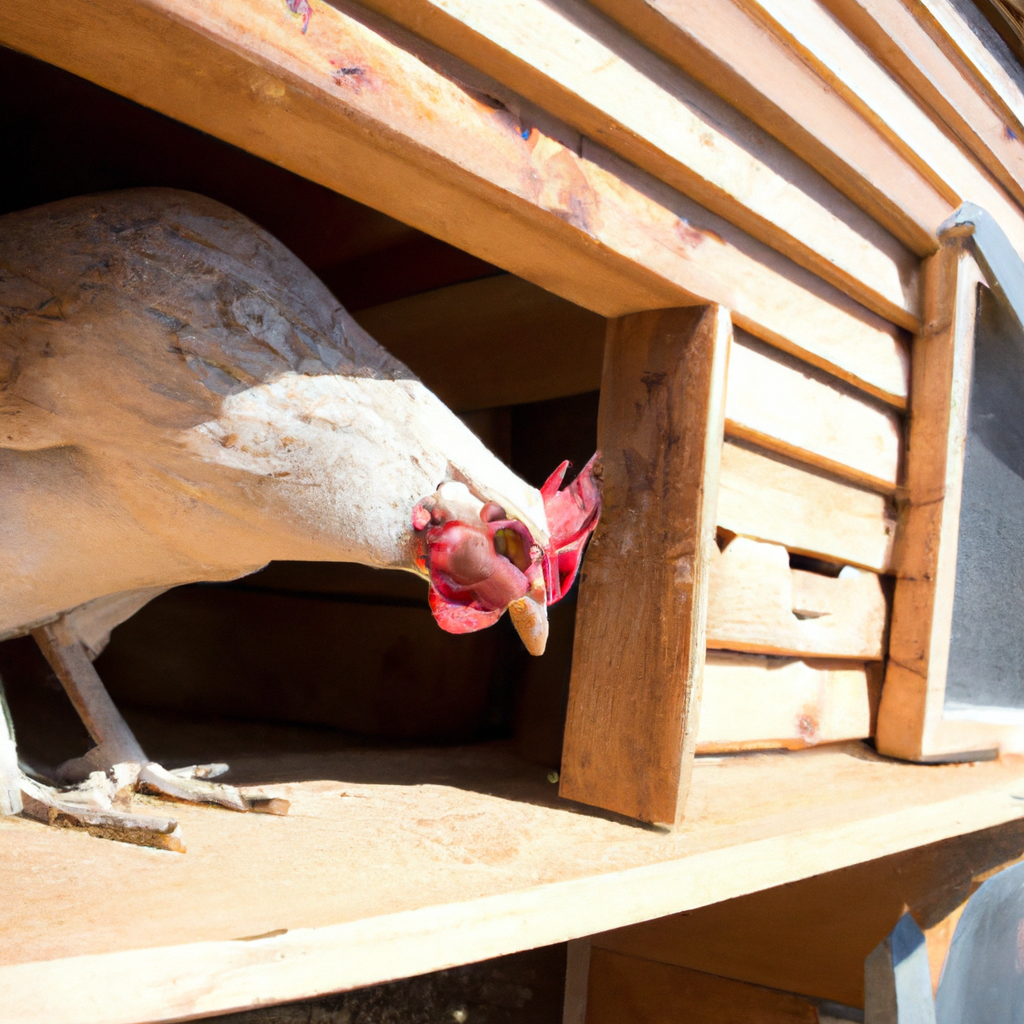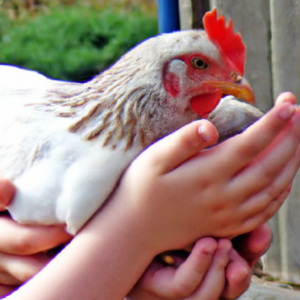
If you’re thinking about starting your own backyard chicken coop, one important factor to consider is the amount of space each chicken needs. Providing the right amount of space is crucial for their health and well-being. In this article, we will discuss the recommended space per chicken in both the coop and the run, helping you create a comfortable and enjoyable environment for your feathered friends.

Coop and Run Design
When it comes to designing a coop and run for your chickens, there are several important considerations to keep in mind. Size and layout play a crucial role in ensuring the comfort and well-being of your flock. By providing adequate space and organization, you can create a safe and enjoyable environment for your chickens to thrive.
1.1 Size considerations
The size of your coop and run is a key factor in providing the best living conditions for your chickens. It is recommended to allow ample space for them to move around, stretch their wings, and engage in natural behaviors such as scratching and dust bathing. By giving them enough room, you can prevent overcrowding and minimize stress within the flock.
1.2 Layout and organization
In addition to size, the layout and organization of your coop and run are equally important. Consider the placement of nesting boxes, perches, and feeding/watering stations. Having a well-structured and organized space will make it easier for you to maintain cleanliness and provide your chickens with easy access to essential resources.
Recommended Space Per Chicken
To ensure the health and happiness of your chickens, it is crucial to provide them with adequate space both in the coop and in the run. Let’s take a closer look at the space requirements for each area.
2.1 Coop space requirements
To determine the recommended coop space per chicken, a general guideline is to allow at least 4 square feet of indoor space per bird. This will give your chickens enough room to move around comfortably, perch, and lay eggs. Remember to consider the potential growth of your flock when planning the size of your coop.
2.2 Run space requirements
While the coop provides shelter and sleeping quarters, the run allows your chickens to explore, forage, and exercise. It is recommended to provide a minimum of 10 square feet of outdoor space per chicken in the run. This will ensure that they have ample room to stretch their legs and engage in natural behaviors such as pecking and scratching the ground.

Coop Space Requirements
The coop serves as the primary living space for your chickens, so it is essential to meet their space requirements effectively.
3.1 Minimum coop size
The minimum coop size recommended for each chicken is 4 square feet. This allows them to have enough room to move around comfortably and engage in natural behaviors. If you have a small backyard and limited space, it is crucial to ensure that the coop meets this minimum requirement to promote the overall well-being of your flock.
3.2 Additional considerations
In addition to the minimum size requirement, there are a few other factors to consider when determining the ideal coop space for your chickens. Take into account the breed and size of your chickens, as larger breeds may require slightly more space. Also, consider including nesting boxes, perches, and areas for dust bathing to accommodate their natural behaviors.
Run Space Requirements
While the coop provides a sheltered space for your chickens, the run gives them the opportunity to explore and exercise outdoors. Providing adequate run space is important for their physical health and mental stimulation.
4.1 Adequate space for exercise
To determine the recommended run space per chicken, it is generally suggested to allow a minimum of 10 square feet per bird. This gives them enough room to roam, forage, and engage in exercise. Chickens are naturally active animals, so providing enough space for them to move freely is essential for their overall well-being.
4.2 Factors to consider
When planning the size of your run, consider the number of chickens in your flock and their breed size. Larger flocks and bigger breeds may require more space to ensure they have enough room to move and stretch their wings. It is also important to take into account any additional structures you may want to include in the run, such as shelters or perches.

Coop and Run Integration
Creating a seamless integration between the coop and run is vital for the convenience of both you and your chickens. Proper design and access points allow for easy cleaning and maintenance of the coop while ensuring your chickens can freely transition between the two spaces.
5.1 Connecting coop and run
When designing your coop and run, consider incorporating a door or opening that connects the two areas. This allows your chickens to freely move between the coop and run, which promotes exercise and their natural behaviors. Additionally, it makes it easier for you to clean the coop and access the run when needed.
5.2 Providing access
In addition to connecting the coop and run, consider including convenient access points for yourself. Designing doors or hatches that allow easy access to both the coop and run will make daily chores and maintenance much more manageable. It’s important to ensure that these access points are secure and predator-proof to keep your flock safe.
Ventilation and Lighting
Proper ventilation and lighting are crucial for maintaining a healthy and comfortable environment within the coop. These elements aid in regulating temperature, preventing moisture buildup, and promoting good air quality.
6.1 Importance of ventilation
A well-ventilated coop helps ensure good airflow and prevents the buildup of ammonia and moisture. This is essential for preventing respiratory issues and other health problems that can arise from poor air quality. Providing windows, vents, or screened openings will allow fresh air to circulate, keeping your chickens healthy and happy.
6.2 Lighting requirements
Chickens require a balance of natural and artificial light. Natural light helps regulate their internal clock and promotes healthy egg-laying. If natural light is limited, supplementing with artificial lighting can help maintain a consistent schedule. Aim for approximately 14-16 hours of light per day to support optimal egg production and overall well-being.

Flock Size and Compatibility
Determining the appropriate flock size and selecting compatible chicken breeds are important considerations when planning your coop and run.
7.1 Determining flock size
The size of your flock will depend on various factors, including the available space and your personal capacity to care for them. It is recommended to start with a small flock and gradually increase the number of chickens as you become more experienced. Consider your coop and run size when determining the maximum number of chickens you can comfortably accommodate.
7.2 Compatibility of chicken breeds
When selecting chicken breeds for your flock, it’s essential to consider their compatibility. Some breeds are known to be more dominant or aggressive, while others are more docile. It is recommended to choose breeds that are known to get along well and have similar temperaments to minimize potential conflicts within the flock.
Benefits of Sufficient Space
Providing sufficient space for your chickens offers numerous benefits that contribute to their overall health and well-being.
8.1 Reduced stress and aggression
By giving your chickens enough space, you can minimize stress and aggression within the flock. Overcrowding can lead to pecking battles and the development of a hierarchical structure that can result in injuries and discord. Sufficient space allows each bird to establish their territory and maintain a more balanced social dynamic.
8.2 Promotes overall health
Adequate space promotes physical activity, which is crucial for maintaining healthy body weight and good muscle tone. It also allows for more natural behaviors, such as foraging, dust bathing, and stretching their wings. These activities contribute to their mental stimulation and overall well-being.
Maintenance and Cleaning
Proper maintenance and regular cleaning of your coop and run are essential for the health and hygiene of your chickens.
9.1 Managing waste
Regularly managing chicken waste is crucial for preventing the buildup of harmful bacteria and odors. Utilize appropriate materials such as straw, wood shavings, or sand bedding, which can be easily cleaned and replaced. Regularly removing soiled bedding and droppings will help maintain a clean and healthy living environment for your flock.
9.2 Regular cleaning schedule
Establishing a consistent cleaning schedule is vital for maintaining optimal cleanliness in the coop and run. Set aside designated times each week for cleaning tasks such as removing dirty bedding, disinfecting surfaces, and ensuring proper ventilation. A clean and well-maintained coop reduces the risk of disease and promotes the overall health of your chickens.
Conclusion
In conclusion, providing appropriate space in your coop and run is crucial for the well-being of your chickens. By considering size, layout, and integration, you can create a comfortable and enjoyable environment for your flock. Remember to meet the recommended space requirements for both the coop and run, and consider factors such as ventilation, lighting, and flock compatibility. By prioritizing space, you can reduce stress and aggression, promote overall health, and ensure the happiness of your feathered friends.







